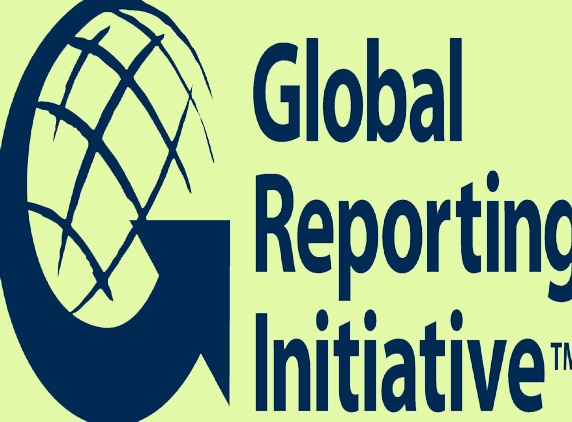Corporate Social Sustainability- The Relevance of Global Reporting Index (Part II)
March 27, 2012 18:17
The Global Reporting Index measures the performance of the Corporate on certain defined criteria. A vague parallel can be drawn to the Accounting Standards issued by the Institute of Chartered Accountants of India (ICAI) for measuring the financial performance of the company. Similarly, the corporate social responsibility of a company is measured by this Global reporting Index. A brief of the GRI are:
GRI On Environment
The Aspects in the Environment Indicator set are structured to reflect the inputs, outputs, and modes of impact an organization has on the environment. Energy, water, and materials represent three standard types of inputs that result in outputs of environmental significance, which are captured under the Aspects of Emissions, Effluents, and Waste. Biodiversity is also related to the concepts of inputs to the extent that it can be viewed as a natural resource. The Aspects of Transport and Products and Services represent areas in which an organization can further impact the environment, but often through other parties such as customers or suppliers of logistics services.
GRI On Economic Performance
Performance data generated in response to the Indicators in this section are expected to illustrate:
• The flow of capital amongst different stakeholders; and
• The major economic impacts of the organization throughout society.
An organization’s economic performance is fundamental to understanding the organization and its basis for sustainability. Financial statements provide information about the financial position, performance, and changes in the financial position of an entity. An organization may be financially viable, but this may have been achieved by creating significant externalities that impact other stakeholders. Economic Performance Indicators measure the economic outcomes of an organization’s activities and the effect of these outcomes on a broad range of stakeholders.
The Indicators in this section are divided into three categories:
1. Economic Performance. This category of Indicators addresses the direct economic impacts of the organization’s activities and the economic value added by these activities.
2. Market Presence. These Indicators provide information about interactions in specific markets.
3. Indirect Economic Impacts. These Indicators measure the economic impacts created as a result of the organization’s economic activities and transactions.
GRI on Human Rights
Human Rights Performance Indicators elicit disclosures on the impacts and activities an organization has on the civil and political human rights of its stakeholders. The Aspects within these Performance Indicators are based on internationally recognized standards, primarily the United Nations Universal Declaration of Human Rights and the ILO Declaration on the Fundamental Principles and Rights at Work of 1998 (in particular the eight Core Conventions of the ILO). Human Rights Indicators focus on how the reporting organization maintains and respects the basic rights of a human being, whereas the Indicators on Labor Practices reflect the quality of the work and the working environment. The Performance Indicators seek to provide comparable measures of results or outcomes, and therefore focus primarily on incidents relating to core human rights. Incidents typically include ‘points of impact’ on stakeholder groups as well as risks for the organization where violations have occurred.
GRI on Labour Indicators
The structure of the Labor Indicators is broadly based on the concept of decent work. The set begins with disclosures on the scope and diversity of the reporting organization’s workforce, emphasizing aspects of gender and age distribution.
The approach to dialogue between the organization and its employees, and the degree to which employees are organized in representative bodies are covered. The physical protection and well-being of people at work is covered by Occupational Health and Safety Indicators which address both the scope of programs as well as statistical performance on health and safety.
The scope of employee benefits and contributions toward a broad social goal of diversity, the support organizations provide to employees to enhance personal skills and potential are also represented in these Indicators.
GRI On Product Responsibility
The Product Responsibility Indicator set addresses the effects of products and services management on customers and users. Organizations are expected to exercise due care in the design of their products and services to ensure they are fit for their intended use and do not pose unintended hazards to health and safety. In addition, communications related to both products and services and users need to take into consideration the information needs of customers and their rights to privacy. The Indicators are primarily structured in pairs, with a Core Indicator seeking disclosure on the processes in place to address the aspect, and an additional Indicator to report on degree of compliance
GRI on society
The categories of Labor, Human Rights, and Product Responsibility address social impacts associated with specific stakeholder groups (such as employees or customers). These interactions, as well as the organization’s approach to dealing with social groups such as communities, represent an important component of sustainability performance. The Society Performance Indicators therefore focus on the impacts organizations have on the communities in which they operate, and how the organization’s interactions with other social institutions are managed and mediated. In particular, information is sought on bribery and corruption, involvement in public policy-making, monopoly practices, and compliance with laws and regulations other than labor and environmental.
The writer is a company secretary and can be reached at This email address is being protected from spambots. You need JavaScript enabled to view it.


























